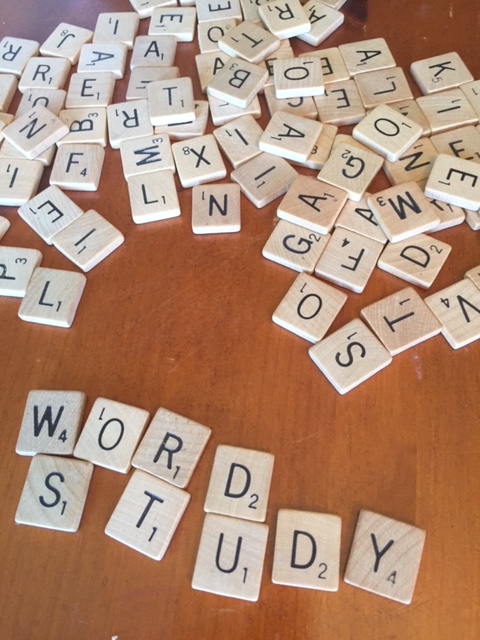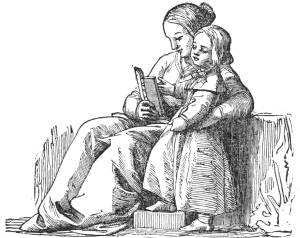This week we share quotes that deal with memorizing Scripture. We pray it is a blessing and that it will guide your homes as you make these truths your own.

“The mind must be stored with pure principles. Truth must be graven on the tablets of the soul. The memory must be filled with the precious truths of the Word. Then, like beautiful gems, these truths will flash out in the life.” ~Messages to Young People 69.3
“The use of object lessons, blackboards, maps, and pictures, will be an aid in explaining these lessons, and fixing them in the memory. Parents and teachers should constantly seek for improved methods. The teaching of the Bible should have our freshest thought, our best methods, and our most earnest effort.” ~Education 186.1
“But there is but little benefit derived from a hasty reading of the Scriptures. One may read the whole Bible through and yet fail to see its beauty of comprehend its deep and hidden meaning. One passage studied until its significance is clear to the mind and its relation to the plan of salvation is evident, is of more value than the perusal of many chapters with no definite purpose in view and no positive instruction gained. Keep your Bible with you. As you have opportunity, read it; fix the texts in your memory. Even while you are walking the streets you may read a passage and meditate upon it, thus fixing it in the mind.” ~Steps to Christ 90.2
“Says the psalmist, ‘The law of the Lord is perfect.’ How wonderful in its simplicity, its comprehensiveness and perfection, is the law of Jehovah! It is so brief that we can easily commit every precept to memory, and yet so far-reaching as to express the whole will of God, and to take cognizance not only of the outward actions, but of the thoughts and intents, the desires and emotions, of the heart.” ~Sons and Daughters of God 39.3
“Here are the promises, plain and definite, rich and full; but they are all upon conditions. If you comply with the conditions, can you not trust the Lord to fulfill His word? Let these blessed promises, set in the framework of faith, be placed in memory’s halls. Not one of them will fail. All that God hath spoken, He will do. “He is faithful that promised.” ~Testimonies to the Church, Volume 5, 630.2
This one is in reference to when Satan comes in to tempt us to give up all hope… point him to the promises we are assured of in God’s Word. 🙂
“Let those who work for the higher classes bear themselves with true dignity, remembering that angels are their companions. Let them keep the treasure house of mind and heart filled with, “It is written.’ Hang in memory’s hall the precious words of Christ. They are to be valued far above gold or silver.” ~Ministry of Healing 215.3
“A great lesson is learned when we understand our relation to God and His relation to us. The words, ‘Ye are not your own,’ ‘ye are bought with a price,’ should be hung in memory’s hall, that we may ever recognize God’s right to our talents, our property, our influence, our individual selves. We are to learn how to treat this gift of God, in mind, in soul, in body, that as Christ’s purchased possession we may do Him healthful savory service.” ~Medical Ministry 276.1
“The most valuable treatise on etiquette ever penned is the precious instruction given by the Saviour, with the utterance of the Holy Spirit through the apostle Paul – words that should be ineffaceably written in the memory of every human being, young or old:
‘As I have loved you, that ye also love one another.” John 13:34′” ~Education 242.2
“Two chapters to Be Memorized. – The 12th and 13th chapters of 1st Corinthians should be committed to memory, written in the mind and heart. Through His servan Paul, the Lord has placed before us these subjects for our consideration, and those who have the privilege of being brought together in church capacity will be united, understandingly and intelligently. The figure of the members which compose the body represents the church of God and the relation its members should sustain to one another (MS 1898). ~Seventh-day Adventist Bible Commentary, Volume 6, 1090-91
“Scholars should not try to see how many verses they can learn and repeat; for this brings too great a strain upon the ambitious child, while the rest become discouraged.” ~Counsels on Sabbath School Work 182.1
“The true teacher is not content with dull thoughts, an indolent mind, or a loose memory. He constantly seeks higher attainments and better methods. His life is one of continual growth. In the work of such a teacher there is a freshness, a quickening power, that awakens and inspires his pupils.” ~Education 278.5
It is in youth that the affections are most ardent, the memory most retentive, and the heart most susceptible to divine impressions; and it is during youth that the mental and physical powers should be set to the task in order that great improvements may be made in view of the world that now is, and that which is to come.” ~Sons and Daughters of God 78.3






 an activity for younger children only. But as the report states, the practice should continue because the benefits of reading aloud don’t diminish as children grow older.
an activity for younger children only. But as the report states, the practice should continue because the benefits of reading aloud don’t diminish as children grow older.